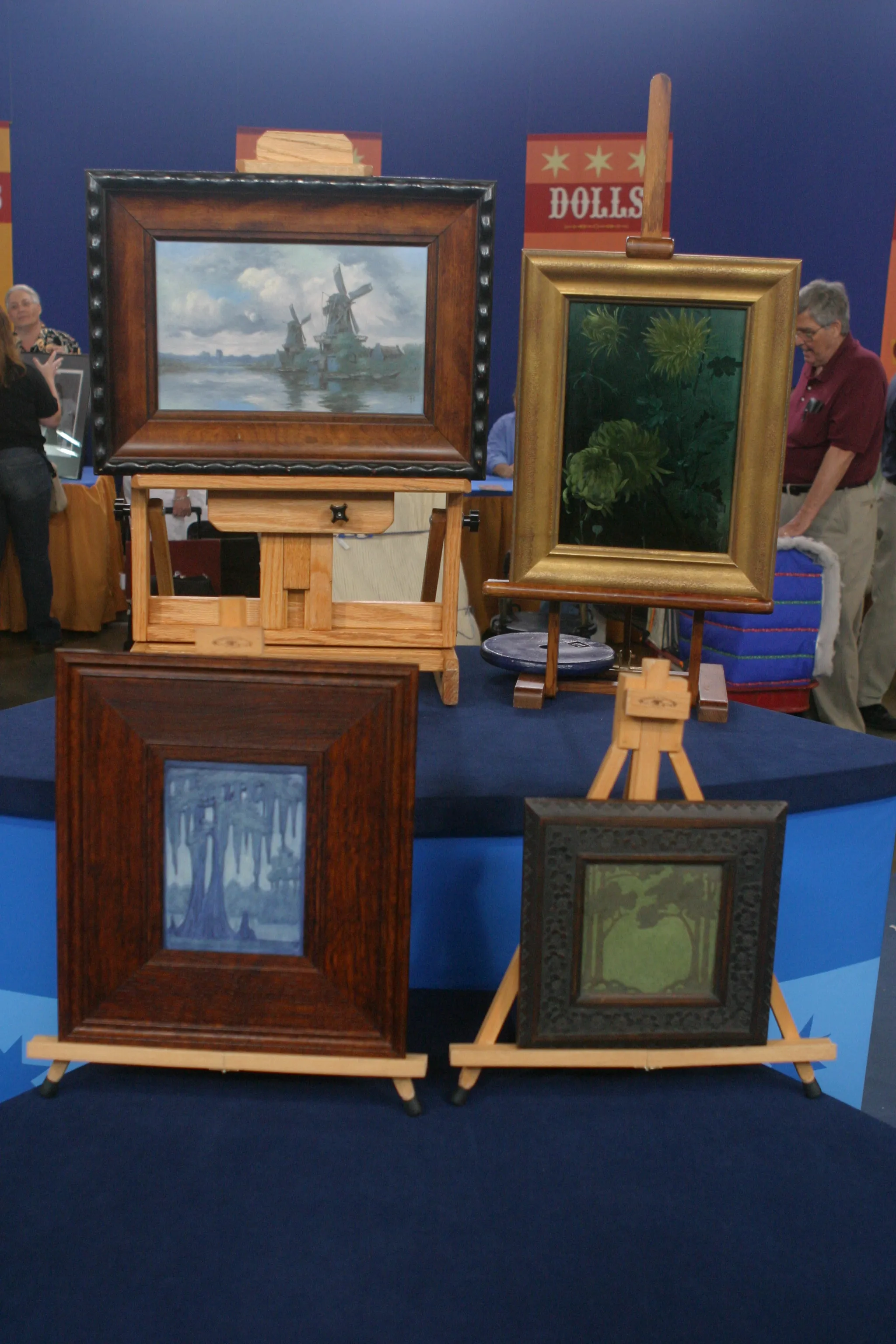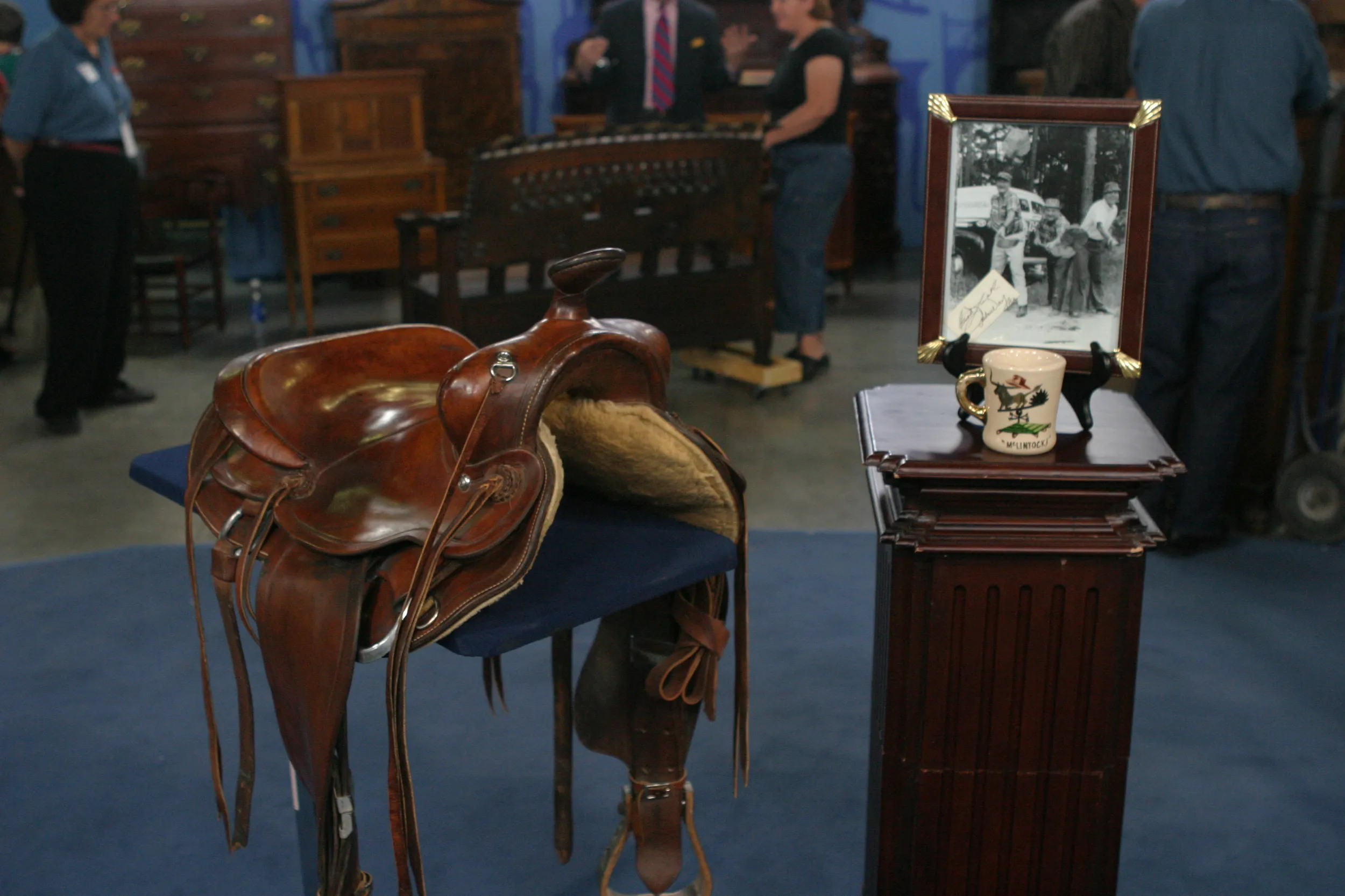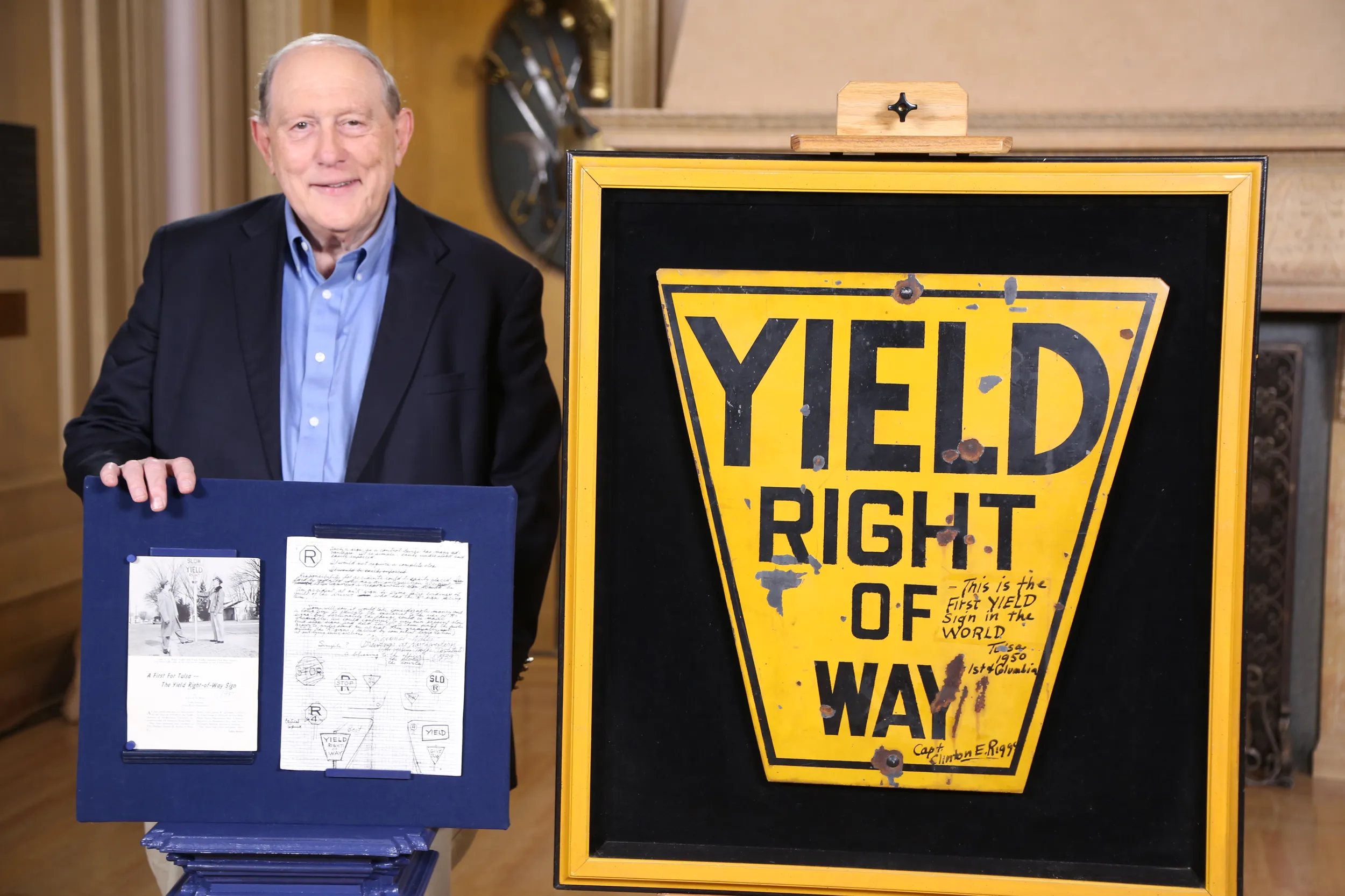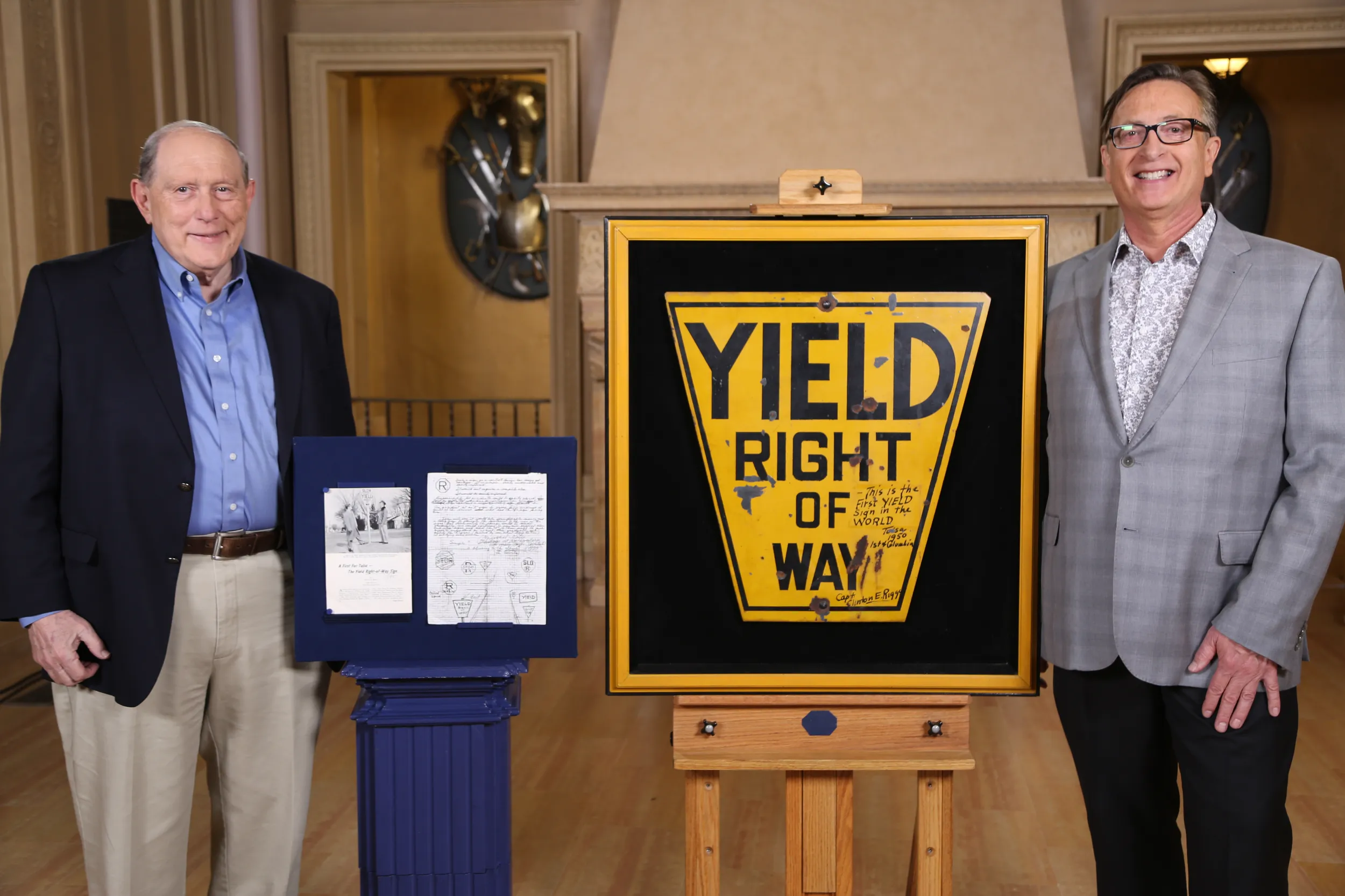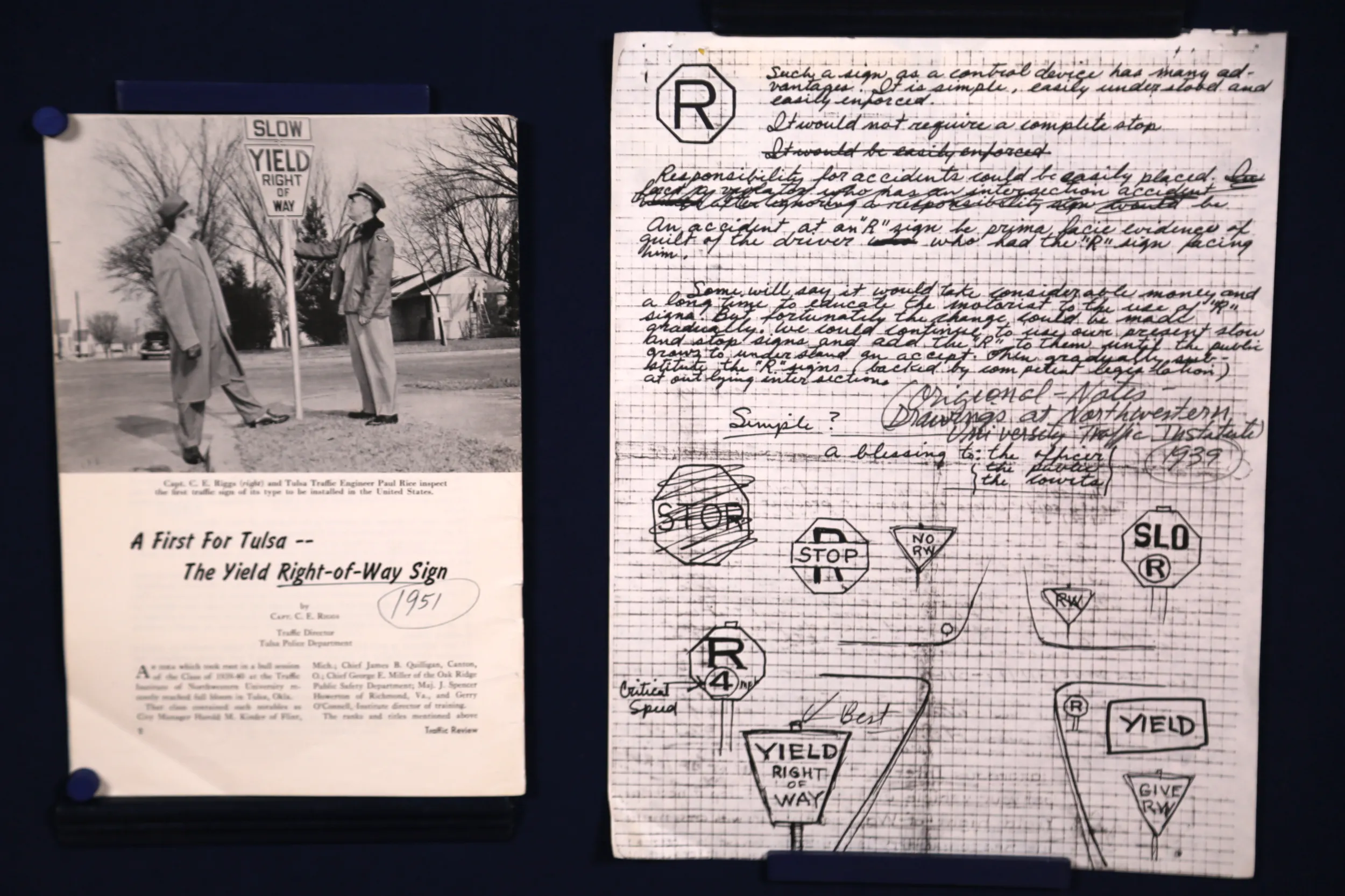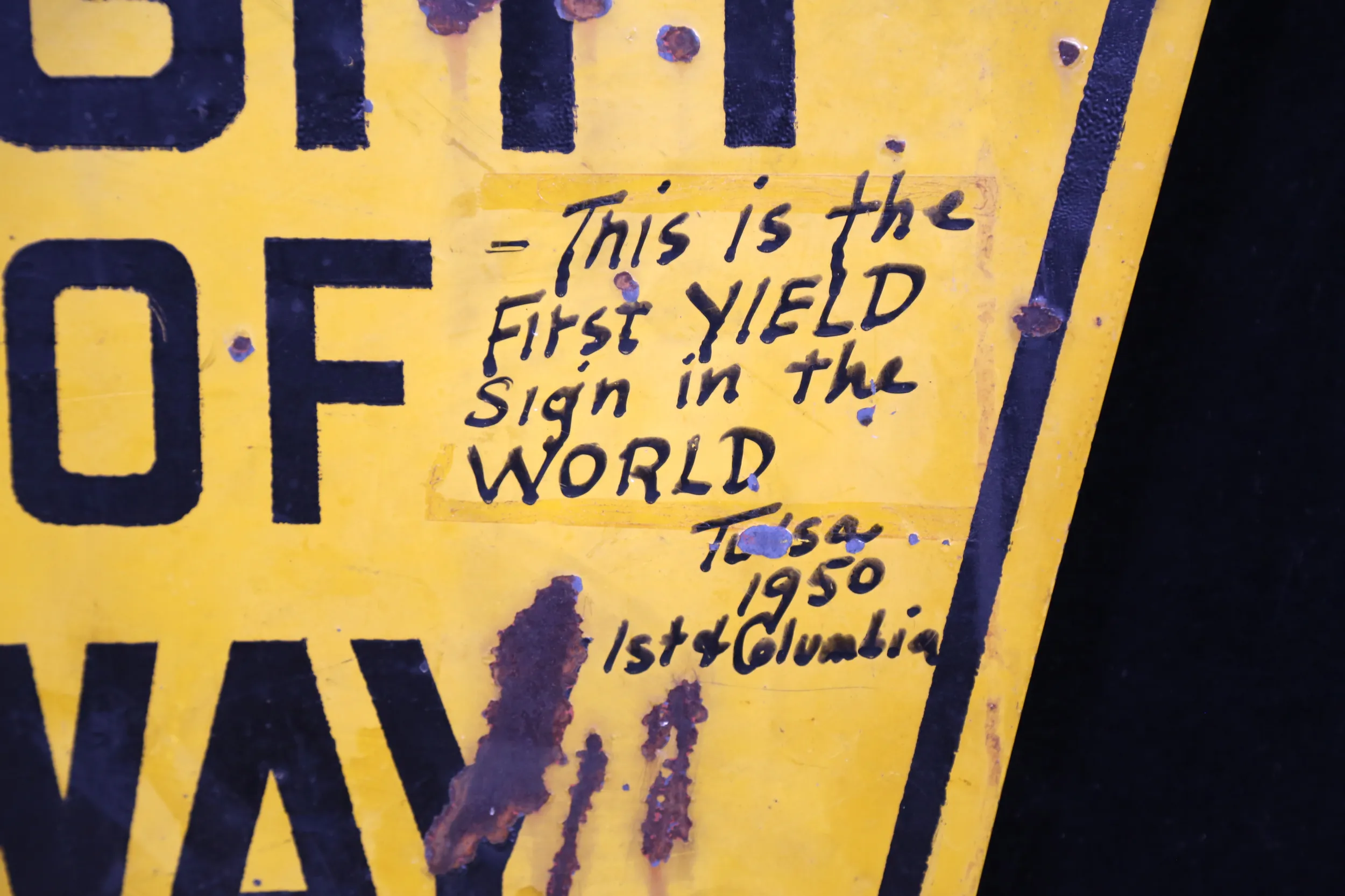GUEST: Well, I inherited it from my father. In 1939, he was a highway patrolman who received a fellowship to the Northwestern Traffic Institute.
APPRAISER: In Chicago.
GUEST: And that's in Chicago, Northwestern University. And while there, a class assignment was to devise a public safety device. And he came back to the class and made a presentation about "What about eliminating most stop signs and putting up a yield, the right-of-way sign?" Well, it was talked around the class, and of the 25 people there, 22 people thought it was a pretty dumb idea. And even the instructor didn't think it was so great.
APPRAISER: (laughs)
GUEST: And then, a war came along, and as a member of the Tulsa Police Department in 1949, he started thinking about it again.
APPRAISER: Mm-hmm.
GUEST: And in 1950, he cut out his own sign and put it up at 1st and Columbia in Tulsa. First and Columbia was actually the intersection that had the highest number of traffic accidents in the city.
APPRAISER: Uh-huh.
GUEST: As many as three a month. And in the nine months after the sign was planted, it dropped down to zero.
APPRAISER: Wow.
GUEST: By that time, he had nine other signs up, and there was not an accident at any of those intersections as well.
APPRAISER: Wow.
GUEST: The public didn't take it... to it too well quite at first, but after he came back with his studies, it was accepted universally.
APPRAISER: Over here, we see that there's a "Slow" kind of a banner above this very sign.
GUEST: Well, he was fearful that people wouldn't understand what they were trying to do to begin with.
APPRAISER: Uh-huh.
GUEST: So, he put the "Slow" on top of it to educate the public.
APPRAISER: I see.
GUEST: And then, after two years, they took them off all of the yield signs.
APPRAISER: These are early renditions that he was trying to work out the design for. Was that when he was at Northwestern University?
GUEST: Yes, it was.
APPRAISER: Okay, so those would have been in the 1939 era?
GUEST: '39, '40.
APPRAISER: Wow. Okay. It's just kind of neat to see how his brain is working, how the... the design of the yield sign came about. It's kind of a... an amazing find. I would never think of running into a yield sign and... and having it blow my mind. I mean, this... this is a really good historical artifact here. In my research and doing the comps, I came around to a value on this of $6,000 to $8,000 at auction.
GUEST: Very good. Thank you.



